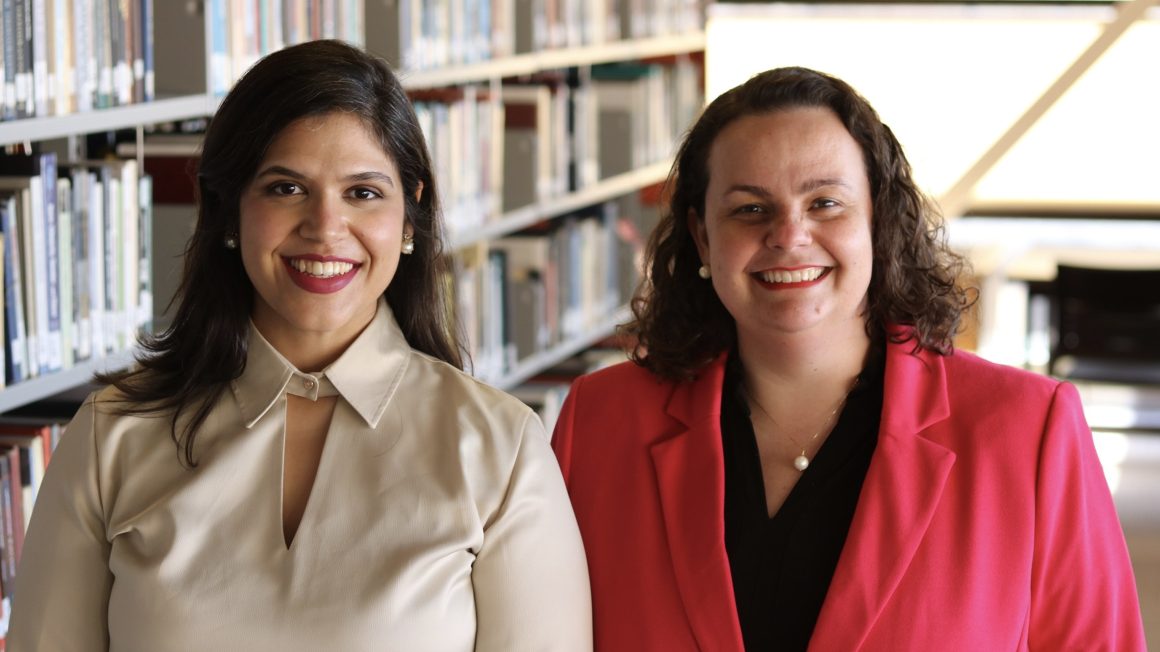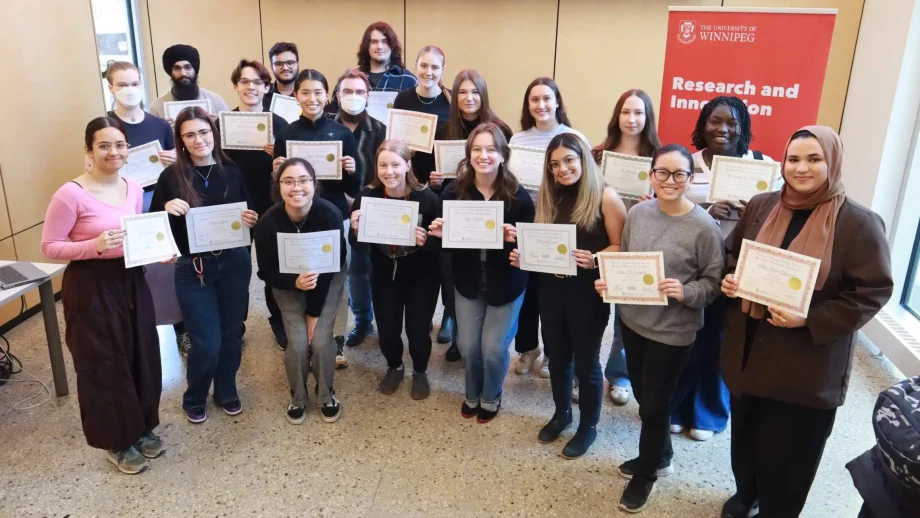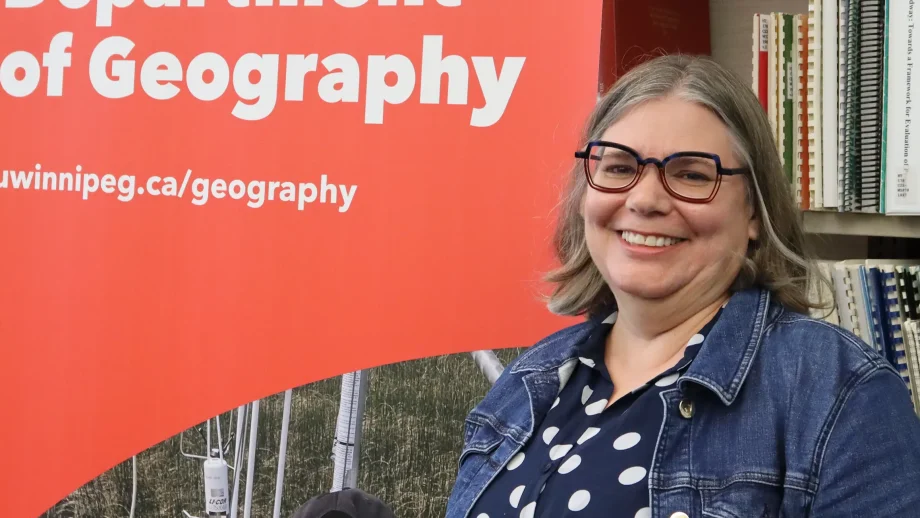Earlier this fall, two Brazilian compatriots, a visiting PhD student and a UWinnipeg professor, began work on a literary crossover where ancient ekphrasis and modern comic books meld.
Maria Cláudia Gastal Ramos, a PhD student in creative writing, came to UWinnipeg for a month as a Fellow, to work with Dr. Flavia Vasconcellos Amaral, an assistant professor in Classics, who specializes in Greek Literature and Language and has worked on ekphrasis in epigram, a literary genre that comes from inscriptions.
Dr. Vasconcellos Amaral allowed me to see the undebatable relevance of language on creating images through words and understand how humans have been using this process since the time of ancient Greece.
Maria Cláudia Gastal Ramos
This partnership is part of Ramos’ prestigious Brazilian Fellowship funded by the National Research Funding Agency (CAPES). This fellowship included Dr. Vasconcellos Amaral’s mentorship and guidance, which will continue through the remaining years of Ramos’ PhD, even though she has since returned to Brazil.
Serendipitous connections
This serendipitous alignment is a result of the intellectual network of Ramos’ supervisor Dr. Carlos Leonardo Bonturim Antunes at the Federal University of Rio Grande do Sul (UFRGS). He reached out to Dr. Vasconcellos Amaral who both are colleagues and former undergrads in Classics at the University of São Paulo, Brazil.
This element was integral to allow Ramos to do her one-month Fellowship in Canada at UWinnipeg and help develop her research abroad.
Stretching creative muscle
This partnership with Dr. Vasconcellos Amaral has stretched Ramos’ creative writing muscle by discussing readings on ancient poetry and ekphrasis to find how learning about ancient poetic components could link to modern audio-visual descriptions, and strengthen her dissertation research.
“What struck me the most in my readings about the ancient concept of ekphrasis was how similar its effect is when we think about audio description. For example, in a quote by the ancient Athenian philosopher Hermogenes in Progymnasta we hear that ‘the special virtues of ekphrasis are clarity and visibility; the style should contrive to bring about seeing through hearing.’ That is what I will aim to do in my comic book without images, just audio description: bring the absent images through words,” says Ramos.
Ekphrasis through yellow-coloured glasses
Such an innovative and creative approach to comic books is tightly linked to the way the PhD student experiences the world. Ramos wears yellow-coloured glasses to help with her achromatopsia, a condition characterized by the absence of color vision, low visual acuity and severe photophobia.
“I live in both worlds – the one of the seeing people, using my sight to do things – and the one of the disabled people, using assistive resources, such as traffic lights with sound alarms, augmented font to read, and, more recently, audio description,” explains Ramos.
Using the experience of her vision impairment, Ramos is creating a comic book without images, just offering its audio description in her PhD dissertation. The creative aspect of the book will rely on modern day audio description and its wording will experiment with ancient ekphrastic effect for readers to “see” it through audio narration.
Surprised by her initial experience of an audio-described movie in which there were no images, only the movie track and the voice describing the scenes, she was inspired to emulate the experience with her comic book.
Pump up the images
“It was an important moment for me to realize the absolute importance of audio description for completely visually impaired people, who depend almost exclusively on this language resource to access movies, plays, images,” shared Ramos. An audio only description of her comic book is her way to propose an equal playing field for seeing and visually impaired people having a shared ‘visual’ experience.
Dr. Vasconcellos Amaral’s mentorship was pivotal involving ekphrasis in Ramos’ work.
“Dr. Vasconcellos Amaral allowed me to see the undebatable relevance of language on creating images through words and understand how humans have been using this process since the time of ancient Greece,’ shared Ramos.
Dr. Vasconcellos Amaral notes connecting the dots from Classics to creative writing as an exhilarating aspect of this collaboration, “Engaging with new research themes and playing around with different methods while posing questions have been the most exciting and rewarding experiences in terms of our research together.”
Forging new paths between past and present
The duo are approximating ekphrasis to audio description, considering that both are human practices that use the language to turn verbal images into vivid images. “Although they belong to different times and purposes, their results are linked by the fact that language is able to give us access to images, dispensing their materiality,” explained Ramos.
“In this sense, the understanding of ekphrasis will help us comprehend how such rhetorical device has been used over time,” said Dr. Vasconcellos Amaral. “Besides giving Ramos theoretical background on how to make the audience engage with descriptions more vividly, learning more about ekphrasis will allow us to reconstruct a possible path between past and present.”





